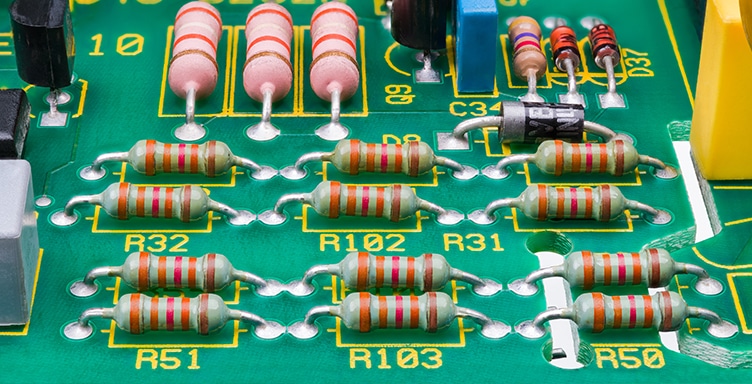With the expansion of computer technology and electronics in virtually every aspect of our lives, it’s easy to forget the foundation upon which they are built: printed circuit boards, or PCBs. We take you through the history of the printed circuit board.

Printed circuit boards are essentially printed wiring: a (epoxy) board with copper patterns printed on it. Although the principle of the printed circuit board has remained largely the same over the years, the first PCBs are almost unrecognizable compared to modern designs.
The first printed circuit board was developed in 1925 by Charles Ducas, an American inventor, who stenciled conductive materials onto a wooden board. In 1943, Paul Eisler patented a more advanced PCB design, where circuits were etched onto copper foil on a non-conductive substrate reinforced with glass.
During World War II, the British and American armies collaborated to perfect the technique, and in 1948, the US Army released the PCB technology to the public, leading to widespread development. In the years that followed, printed circuit boards evolved from single-sided, with copper on one side, to complex multilayers.
In 1978, Bellmann started manufacturing printed circuit boards for industry and assembly companies. At that time, printed circuit boards were still entirely handcrafted: traces were taped onto a transparent layer using a small roller. This process was done to scale: the smaller and more precise the printed circuit board needed to be, the larger the drawing became.
The drawing was reduced to the correct size using a camera. Then, all the holes for component connections were manually programmed and drilled into the printed circuit boards. Bellmann handled all the enlarging and sizing of these so-called films in its own darkroom.
Nowadays, it’s hard to imagine how things were done in the past. Digitalization has not only changed our processes but also enables printed circuit boards to contain more and more technology. Printed circuit boards are smaller, more complex, and more precise. Think of it like the first computers: they filled an entire living room. Today your smartphone contains a much more powerful computer and fits right in your pocket.
This is Moore’s Law: computer capacity doubles every year while dimensions shrink. Designs made with CAD systems are much more accurate and can contain much more information than before. However, there is also a pitfall here: because you can infinitely zoom in and out, it’s easy to lose sight of the manufacturability of the printed circuit board.